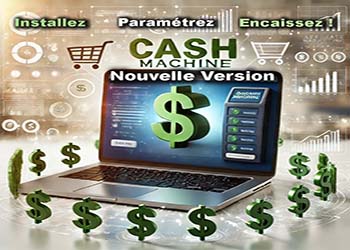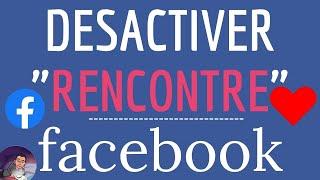#mskuthar #b2adigitals #Ecommerce #Digital_MarketingTypes of Ecommerce Business Models: Traditional and Innovate New Ones to Consider. B2C – Business to consumer.
B2C businesses sell to their end-user. The B2C model is the most common business model, so there are many unique approaches under this umbrella.
Anything you buy in an online store as a consumer — think wardrobe, household supplies, entertainment — is done as part of a B2C transaction.
The decision-making process for a B2C purchase is much shorter than a business-to-business (B2B) purchase, especially for items that have a lower value.
Think about it: it’s much easier for you to decide on a new pair of tennis shoes than for your company to vet and purchase a new email service provider or food caterer.
Because of this shorter sales cycle, B2C businesses typically spend less marketing dollars to make a sale, but also have a lower average order value and less recurring orders than their B2B counterparts.
And B2C doesn’t only include products, but services as well.
B2C innovators have leveraged technology like mobile apps, native advertising, and remarketing to market directly to their customers and make their lives easier in the process.
For example, using an app like Lawn Guru allows consumers to easily connect with local lawn mowing services, garden and patio specialists, or snow removal experts.
Additionally, home service businesses can use Housecall Pro’s plumbing software app to track employee routes, text customers, and process credit card payments on the go, benefitting both the consumer and business alike.
B2B – Business to business.
In a B2B business model, a business sells its product or service to another business. Sometimes the buyer is the end-user, but often the buyer resells to the consumer.
B2B transactions generally have a longer sales cycle, but higher-order value and more recurring purchases.
Recent B2B innovators have made a place for themselves by replacing catalogs and order sheets with e-commerce storefronts and improved targeting in niche markets.
In 2020, close to half of B2B buyers are millennials — nearly double the amount from 2012. As younger generations enter the age of making business transactions, B2B selling in the online space is becoming more important.
C2B – Consumer to business.
C2B businesses allow individuals to sell goods and services to companies.
In this ecommerce model, a site might allow customers to post the work they want to be completed and have businesses bid for the opportunity. Affiliate marketing services would also be considered C2B.
Elance (now Upwork) was an early innovator in this model by helping businesses hire freelancers.
The C2B ecommerce model’s competitive edge is in pricing for goods and services.
This approach gives consumers the power to name their price or have businesses directly compete to meet their needs.
Recent innovators have creatively used this model to connect companies to social media influencers to market their products.
C2C – Consumer to consumer.
A C2C business — also called an online marketplace — connects consumers to exchange goods and services and typically make their money by charging transaction or listing fees.
Online businesses like Craigslist and eBay pioneered this model in the early days of the internet.
C2C businesses benefit from self-propelled growth by motivated buyers and sellers, but face a key challenge in quality control and technology maintenance.
B2C businesses sell to their end-user. The B2C model is the most common business model, so there are many unique approaches under this umbrella.
Anything you buy in an online store as a consumer — think wardrobe, household supplies, entertainment — is done as part of a B2C transaction.
The decision-making process for a B2C purchase is much shorter than a business-to-business (B2B) purchase, especially for items that have a lower value.
Think about it: it’s much easier for you to decide on a new pair of tennis shoes than for your company to vet and purchase a new email service provider or food caterer.
Because of this shorter sales cycle, B2C businesses typically spend less marketing dollars to make a sale, but also have a lower average order value and less recurring orders than their B2B counterparts.
And B2C doesn’t only include products, but services as well.
B2C innovators have leveraged technology like mobile apps, native advertising, and remarketing to market directly to their customers and make their lives easier in the process.
For example, using an app like Lawn Guru allows consumers to easily connect with local lawn mowing services, garden and patio specialists, or snow removal experts.
Additionally, home service businesses can use Housecall Pro’s plumbing software app to track employee routes, text customers, and process credit card payments on the go, benefitting both the consumer and business alike.
B2B – Business to business.
In a B2B business model, a business sells its product or service to another business. Sometimes the buyer is the end-user, but often the buyer resells to the consumer.
B2B transactions generally have a longer sales cycle, but higher-order value and more recurring purchases.
Recent B2B innovators have made a place for themselves by replacing catalogs and order sheets with e-commerce storefronts and improved targeting in niche markets.
In 2020, close to half of B2B buyers are millennials — nearly double the amount from 2012. As younger generations enter the age of making business transactions, B2B selling in the online space is becoming more important.
C2B – Consumer to business.
C2B businesses allow individuals to sell goods and services to companies.
In this ecommerce model, a site might allow customers to post the work they want to be completed and have businesses bid for the opportunity. Affiliate marketing services would also be considered C2B.
Elance (now Upwork) was an early innovator in this model by helping businesses hire freelancers.
The C2B ecommerce model’s competitive edge is in pricing for goods and services.
This approach gives consumers the power to name their price or have businesses directly compete to meet their needs.
Recent innovators have creatively used this model to connect companies to social media influencers to market their products.
C2C – Consumer to consumer.
A C2C business — also called an online marketplace — connects consumers to exchange goods and services and typically make their money by charging transaction or listing fees.
Online businesses like Craigslist and eBay pioneered this model in the early days of the internet.
C2C businesses benefit from self-propelled growth by motivated buyers and sellers, but face a key challenge in quality control and technology maintenance.
- Catégories
- E commerce Ebay














Commentaires